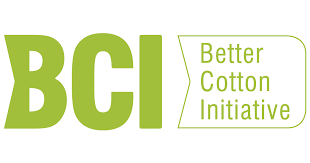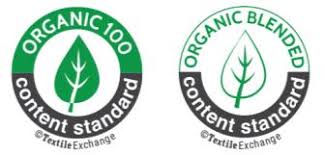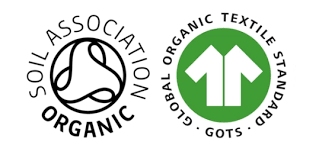Get To Know Your Certifications: Cotton Edition
- Allana McGowan

- Apr 21
- 4 min read
Updated: Aug 13
Sustainable cotton farming has emerged as a crucial response to environmental and social challenges with three prominent certifications. The terms BCI Cotton, Organic Cotton and Regenerative Cotton refer to the different approaches to growing and producing cotton. Each method carries its own set of principles, practices, and environmental impacts. In this post, we’ll break down the differences between them, helping you make informed decisions during the fabric sourcing stage that align with your business goals and values.
Better Cotton Initiative (BCI) Cotton
BCI promotes sustainable cotton farming practices, balancing environmental, economic, and social goals. It is a global initiative designed to make cotton production better for the people who produce it, the environment and the industry’s future.
Practices:
Implements efficient water management techniques to reduce wastage and preserve water resources.
Encourages reduced pesticide and synthetic fertiliser use, aiming to mitigate harmful impacts on soil and water ecosystems.
Promotes practices to improve soil health, such as crop rotation and minimal tillage.
Focuses on training farmers to adopt sustainable practices and ensuring fair wages and safe working conditions.
Certification:
Not as stringent as organic standards; it permits synthetic inputs within defined limits.
Certification ensures adherence to better farming practices but does not guarantee chemical-free production.
Environmental Impact:
Reduces environmental harm compared to conventional farming but does not eliminate synthetic inputs.
Encourages incremental improvements in sustainability, suitable for large-scale application.
Key Challenges:
Transparency issues and blending of BCI cotton with conventional cotton can make traceability difficult.
Inconsistent implementation across regions, coupled with weak environmental and social safeguards, limits its effectiveness.
BCI LOGOS TO LOOK OUT FOR
To continue with your own research on BCI Cotton, find the link to the better cotton initiative here.
Organic Cotton
Organic cotton is grown without synthetic chemicals, pesticides, or genetically modified organisms (GMOs), adhering to stringent organic agricultural standards.
Practices:
Employs natural fertilisers like compost and manure to enrich soil without harming ecosystems.
Uses biological pest control methods and crop rotation to manage pests and maintain soil fertility.
Avoids synthetic chemicals and ensures that seeds are non-GMO.
Certification:
Must meet rigorous organic standards, such as the Global Organic Textile Standard (GOTS) or the Textile Exchange’s Organic Content Standard (OCS).
Certification verifies compliance throughout the supply chain, from planting to processing.
Environmental Impact:
Generally requires less water than conventional cotton due to rain-fed farming practices.
Enhances biodiversity and improves soil health through sustainable land management techniques.
Key Challenges:
Lower yields compared to conventional cotton can lead to higher land use and costs.
Certification processes are expensive and complex, often limiting access for small-scale farmers.
Fraudulent labeling and counterfeit certifications remain a concern, impacting consumer trust.
Raw cotton must be grown on a farm that is certified to its respective government-controlled organic standard and those standards can vary in each country.
ORGANIC COTTON LOGOS TO LOOK OUT FOR
Regenerative Cotton
Regenerative cotton focuses on farming practices that restore and enhance the health of ecosystems, particularly soil health, while addressing climate change challenges.
Practices:
Employs cover cropping and crop diversification to enhance soil organic matter and prevent erosion.
Reduces tillage to preserve soil structure and microbial health.
Integrates livestock into farming systems to mimic natural cycles, improving soil fertility and biodiversity.
Seeks to isolate carbon in the soil, contributing to climate change mitigation.
Certification:
Emerging certifications like Regenerative Organic Certified (ROC) set criteria for soil health, animal welfare, and social fairness.
Certification is still evolving and not as widely adopted or standardised as organic certifications.
Environmental Impact:
Goes beyond sustainability by actively restoring ecosystems and creating resilience against climate change.
Promotes water retention, reduces greenhouse gas emissions and enhances biodiversity.
Key Challenges:
High initial costs and a steep learning curve for farmers can deter adoption.
Lack of universal standards and robust measurement systems complicates verification.
Limited consumer awareness and demand for regenerative products hinder market growth.
REGENERATIVE COTTON LOGO TO LOOK OUT FOR

To continue with your own research on regenerative certification, find the link to here.
As you can see, each certification takes a different approach, while BCI focuses on scalable improvements to mainstream cotton farming, Organic cotton prioritising chemical-free production and regenerative cotton aiming to actively restore ecosystems to tackle climate change, it's still difficult to truly understand the best way forward. But a few things are clear, we must continue to improve working conditions, traceability, financial support and raise consumer awareness to help build a more sustainable future for cotton use in the industry and this is something you can directly help with as a brand.
ON OUR RADAR
The UK's climate is not typically warm and humid enough for cotton to grow so means we never have the ability to source cotton from farm to finished product all within the UK. Paired with the fact we lost the last cotton spinning mill in the UK last year, other methods must be explored and the latest:
CALYX with lab grown cotton: Calyx explain they employ advanced, closed-loop greenhouse systems that require 97% less water, resulting in a total water usage of c415 litres per kilogram.
At the moment I'm not able to find information on how much they are producing, who they're producing for or where it is being sent for further processing so it's possible it's still in the early stage of development but something I'll be keeping an eye on.
For further help & guidance on fabric and certifications book our fabric sourcing offer and have they chance to ask us anything you want during the introduction call.








Comments